The Talent as a Service Market is estimated to be valued at USD 593.3 million in 2025 and is projected to reach USD 1793.9 million by 2035, registering a compound annual growth rate (CAGR) of 11.7% over the forecast period.
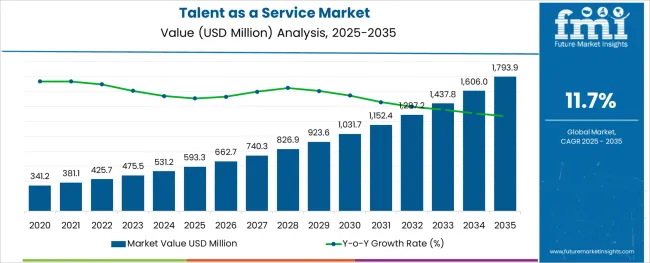
The alginic acid market is undergoing consistent growth, propelled by rising demand from food processing, pharmaceutical formulations, and cosmetic applications. A growing focus on natural and sustainable ingredients in manufacturing processes has positioned alginic acid as a preferred biopolymer across industries.
The market is further supported by its diverse functional benefits, including water retention, gelling, and stabilizing properties, which make it indispensable in high-performance formulations. Increased regulatory acceptance of alginates as safe additives and the push towards cleaner labeling in food and personal care products have reinforced their adoption.
Ongoing innovation in extraction technologies and the utilization of algae as a renewable resource are paving the way for cost-effective production and expanded applications, ensuring sustained market expansion in the coming years.
The market is segmented by Training Type and End User and region. By Training Type, the market is divided into Internal and External. In terms of End User, the market is classified into Banking, Insurance, Retail, IT and Telecom, Services, Government and Defense, Manufacturing, and Logistics.
Regionally, the market is classified into North America, Latin America, Western Europe, Eastern Europe, Balkan & Baltic Countries, Russia & Belarus, Central Asia, East Asia, South Asia & Pacific, and the Middle East & Africa.
When segmented by salts, sodium alginate is expected to command 27.5% of the market revenue in 2025, marking it as the leading subsegment in this category. This leadership has been driven by its superior solubility, ease of incorporation into formulations, and versatility in a wide range of applications.
Its ability to form stable gels and maintain viscosity under varying conditions has made it highly sought after in both food and pharmaceutical sectors. Manufacturers have prioritized sodium alginate due to its consistent performance, cost-effectiveness, and regulatory acceptance, which have collectively strengthened its position.
The segment’s prominence has also been enhanced by its adaptability to evolving consumer preferences for plant-derived and sustainable ingredients, reinforcing its market share.
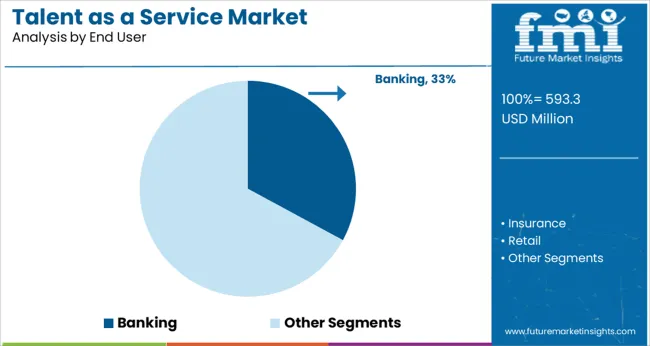
Segmented by end user industry, the food industry is projected to hold 33.0% of the market revenue in 2025, positioning it as the most prominent sector. This dominance has been shaped by the industry’s increasing reliance on alginic acid and its derivatives to deliver desirable textures, stabilize emulsions, and improve shelf life of processed foods.
As consumer demand for clean label and natural additives has intensified, the food sector has responded by integrating alginates into bakery, dairy, and confectionery products. Enhanced production efficiency and compliance with food safety standards have further encouraged widespread use.
The segment’s leadership has also been supported by product differentiation strategies where alginates contribute to premium quality and innovation, securing their role in modern food formulations.
Organizations are producing enormous volumes of data as a result of digitalization, and pressure is mounting to use that data to their advantage to remain competitive. Agencies are increasingly using cloud-based technologies to transform enormous amounts of data into actionable knowledge. For significant players, talent as a service is proven to be a crucial competitive advantage.
Due to the numerous flexible payment and plan alternatives, businesses are switching to cloud-based software. Additionally, the accessibility of customized packages depends on a variety of factors, including the hours of operation, the quantity of users, and others. This feature lowers the cost of the program and increases accessibility for small businesses. As a result, cloud-based talent as a service provides businesses with a model that is tailored to their requirements and includes analytical features and people management skills.
The majority of businesses still have a long way to go in terms of talent analytics, even though data and analytics have long been utilized to guide business choices. One of the main problems impeding the growth of talent in the service industry is a lack of awareness of the advantages of the technology. Furthermore, there may be considerable resource, time, and financial implications associated with talent management. To map out the talent requirements at all levels of the business, talent as a service requires the use of tools, which can be costly. Due to their limited resources, small and medium-sized firms (SMEs) find it challenging to invest in cutting-edge technologies. As a result, talent as a service technician is not widely used by businesses.
As per Future Market Insights, the talent as a service market increased from USD 341.2 Million in 2020 to USD 531.2 Million in 2024, growing at a CAGR of 12.3%.
In its most basic form, talent as a service is an extremely efficient, affordable alternative to a completely manual hiring process. If you need to acquire new employees but don't have the time or resources to do so, outsourcing your hiring process is the solution. have the choice to outsource your hiring process to a capable group of recruiters at a highly affordable price with talent as a service. These factors are likely to surge the market which is anticipated to grow at a CAGR of 11.7% to reach a valuation of USD 1,173.6 Million till 2035
Due to digital competition, an unstable economy, and a new generation of customers with detailed knowledge and high expectations, the IT and telecom business is currently experiencing enormous difficulties. As a result, there is a greater need for both sophisticated recruitment strategies and a workforce that is better trained.
In response to the requirement for acceptance criteria, talent management systems deliver comprehensive insights and effective business strategies. The shifting dynamics of employee connections and the increasing reliance of the industry on digitization for management are driving the demand for management solutions across BFSI.
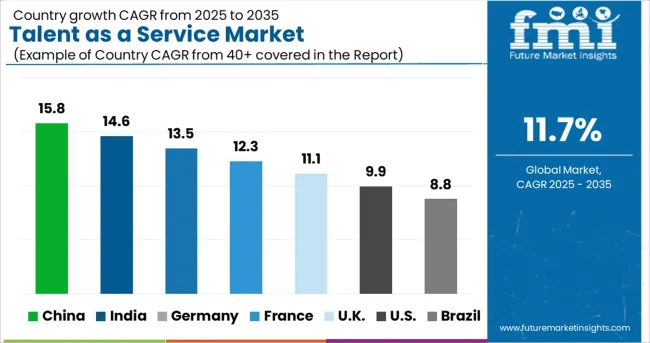
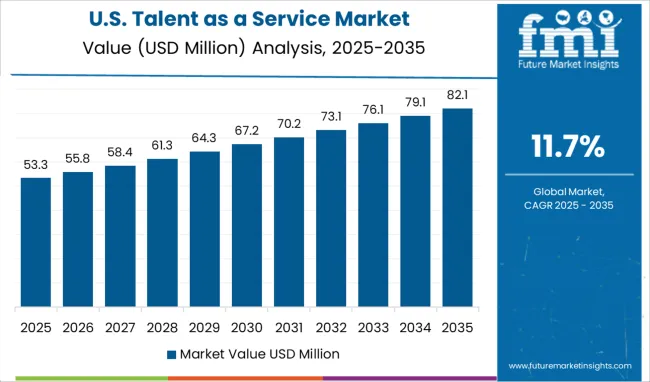
The USA has dominated the market and is expected to remain so in the foreseeable future. The USA is a potentially developed location for adopting talent management, core HR, and recruiting technology, according to a survey conducted by Cornerstone OnDemand, Inc. The existence of significant HCM software providers such as Ceridian HCM Holding Inc., Oracle Corporation, and IBM Corporation, among others, is helping to drive market expansion.
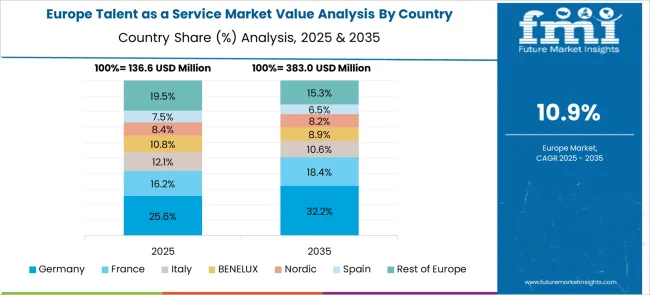
During the forecasted period, Europe is expected to grow at a rapid pace. Demand for robust talent management software for staff selection, mobility, and assessment is expected to be generated by active government activities and legislation connected to talent management. Such policies are being implemented by the European Union to create a competent, trained, adaptive, and networked workforce at the service of Europe. European companies will eventually need to develop source initiatives, obtain, and retain talent internationally when the talent shortages in other regions of the world are combined with misconceptions about the European labor market.
Due to an increase in regional governments' digitalization activities, Asia-Pacific is predicted to experience significant development between 2025 and 2035 at a CAGR of 10.5%.
The Japan region is predicted to grow at the fastest rate. The market's expansion may be attributed in large part to enterprises adopting innovative technology. A significant change in organizational management technology is driving demand throughout the industrialized world. Due to the active ecosystems, SMEs are expected to drive the use of this software in countries such as Japan, India, and Australia. Large enterprises in IT and telecom, BFSI, manufacturing, education, and other sectors, on the other hand, are expected to produce considerable income.
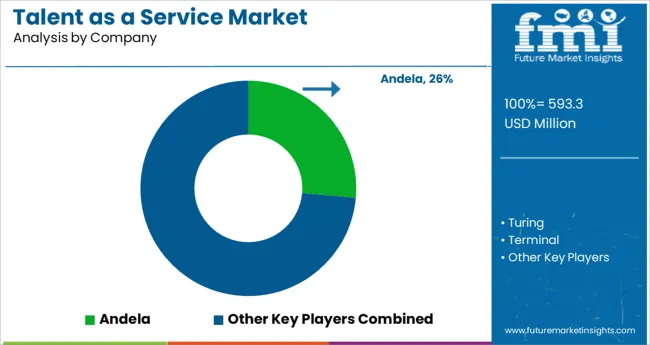
Some of the market's major players are Talentsoft, IBM Corporation, Oracle Corporation, Cisco Systems, Inc., CornerStone OnDemand, Inc., and others. These businesses are now providing innovative solutions that are combined with cutting-edge technology such as AI, cloud computing, and others. Furthermore, the intense market rivalry is prompting significant businesses to rely on acquisition strategies to improve their positions.
Trakstar, a SaaS-based employee engagement, and performance management firm, announced the integration of its prior modular solutions into the Trakstar Platform in June 2024. Furthermore, Oracle Corporation introduced Oracle Analytics, a cloud-based HCM platform, in May 2024 to enhance the decision-making powers of HR teams and boost business performance.
Recent Developments in the Talent as a Service Market
| Attribute | Details |
|---|---|
| Forecast period | 2025 to 2035 |
| Historical data available for | 2020 to 2024 |
| Market analysis | million in value |
| Key regions covered | North America; Europe; Asian Pacific |
| Key countries covered | USA, Germany, France, Italy, Canada, The United Kingdom, Spain, China, India, Australia |
| Key segments covered | Training type, End-use, Region |
| Key companies profiled | Cisco Systems, Inc. (USA); IBM (USA); Siemens (Germany); Microsoft (USA); Hitachi Ltd. (Japan); Schneider Electric (France); Huawei Technologies Co., Ltd (China); Intel Corporation (USA); NEC Corporation (Japan); ABB (Switzerland); Itron Inc., (USA); Oracle (USA); Fujitsu (Japan); Honeywell International Inc.,(USA); Accenture (Ireland); SAP SE (Germany); Sensoneo (Finland); Big belly solar, LLC (USA) |
The global talent as a service market is estimated to be valued at USD 593.3 million in 2025.
It is projected to reach USD 1,793.9 million by 2035.
The market is expected to grow at a 11.7% CAGR between 2025 and 2035.
The key product types are internal and external.
banking segment is expected to dominate with a 32.9% industry share in 2025.






Our Research Products

The "Full Research Suite" delivers actionable market intel, deep dives on markets or technologies, so clients act faster, cut risk, and unlock growth.

The Leaderboard benchmarks and ranks top vendors, classifying them as Established Leaders, Leading Challengers, or Disruptors & Challengers.

Locates where complements amplify value and substitutes erode it, forecasting net impact by horizon

We deliver granular, decision-grade intel: market sizing, 5-year forecasts, pricing, adoption, usage, revenue, and operational KPIs—plus competitor tracking, regulation, and value chains—across 60 countries broadly.

Spot the shifts before they hit your P&L. We track inflection points, adoption curves, pricing moves, and ecosystem plays to show where demand is heading, why it is changing, and what to do next across high-growth markets and disruptive tech

Real-time reads of user behavior. We track shifting priorities, perceptions of today’s and next-gen services, and provider experience, then pace how fast tech moves from trial to adoption, blending buyer, consumer, and channel inputs with social signals (#WhySwitch, #UX).

Partner with our analyst team to build a custom report designed around your business priorities. From analysing market trends to assessing competitors or crafting bespoke datasets, we tailor insights to your needs.
Supplier Intelligence
Discovery & Profiling
Capacity & Footprint
Performance & Risk
Compliance & Governance
Commercial Readiness
Who Supplies Whom
Scorecards & Shortlists
Playbooks & Docs
Category Intelligence
Definition & Scope
Demand & Use Cases
Cost Drivers
Market Structure
Supply Chain Map
Trade & Policy
Operating Norms
Deliverables
Buyer Intelligence
Account Basics
Spend & Scope
Procurement Model
Vendor Requirements
Terms & Policies
Entry Strategy
Pain Points & Triggers
Outputs
Pricing Analysis
Benchmarks
Trends
Should-Cost
Indexation
Landed Cost
Commercial Terms
Deliverables
Brand Analysis
Positioning & Value Prop
Share & Presence
Customer Evidence
Go-to-Market
Digital & Reputation
Compliance & Trust
KPIs & Gaps
Outputs
Full Research Suite comprises of:
Market outlook & trends analysis
Interviews & case studies
Strategic recommendations
Vendor profiles & capabilities analysis
5-year forecasts
8 regions and 60+ country-level data splits
Market segment data splits
12 months of continuous data updates
DELIVERED AS:
PDF EXCEL ONLINE
Talent Management Software Market Report – Trends & Forecast 2023-2033
Talent Acquisition and Staffing Technology and Service Market Analysis – Size, Share, and Forecast Outlook 2025 to 2035
Aseptic IBC Market Size and Share Forecast Outlook 2025 to 2035
Aseptic Packaging Paperboard Market Size and Share Forecast Outlook 2025 to 2035
Aseptic Liquid Packaging Boards Market Size and Share Forecast Outlook 2025 to 2035
Asthma Treatment Market Forecast and Outlook 2025 to 2035
Asphalt Mixing Plants Market Size and Share Forecast Outlook 2025 to 2035
Asia Pacific Tomato Seed Oil Market Size and Share Forecast Outlook 2025 to 2035
Aspirating System Market Size and Share Forecast Outlook 2025 to 2035
Aseptic Formulation Processing Market Size and Share Forecast Outlook 2025 to 2035
Asphalt Testing Equipment Market Size and Share Forecast Outlook 2025 to 2035
Astringent Skin Care Products Market Analysis - Size and Share Forecast Outlook 2025 to 2035
Aseptic Containment Systems Market Size and Share Forecast Outlook 2025 to 2035
Asia Pacific Loop-mediated Isothermal Amplification (LAMP) Market Size and Share Forecast Outlook 2025 to 2035
Asset Performance Management Market Size and Share Forecast Outlook 2025 to 2035
Asphalt Mixing Plant Market Analysis and Opportunity Assessment in India Size and Share Forecast Outlook 2025 to 2035
Asian Sea Bass Market Size and Share Forecast Outlook 2025 to 2035
Asia Pacific Nutraceutical Market Size and Share Forecast Outlook 2025 to 2035
Asia Pacific Sachet Packaging Machines Market Size and Share Forecast Outlook 2025 to 2035
Aspirin Drug Market Size and Share Forecast Outlook 2025 to 2035

Thank you!
You will receive an email from our Business Development Manager. Please be sure to check your SPAM/JUNK folder too.
Chat With
MaRIA